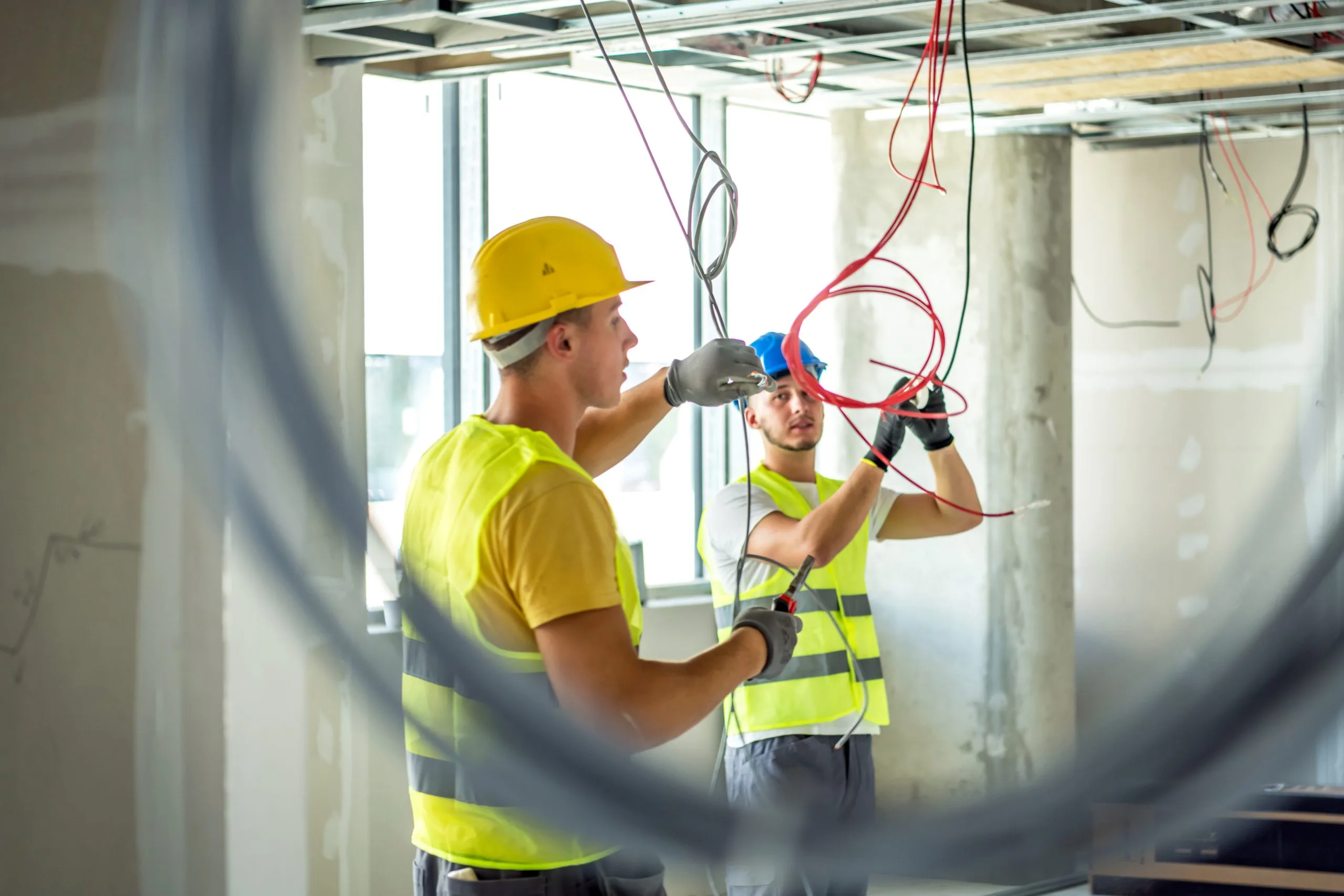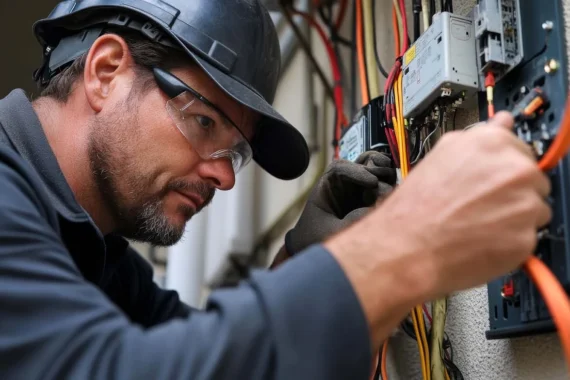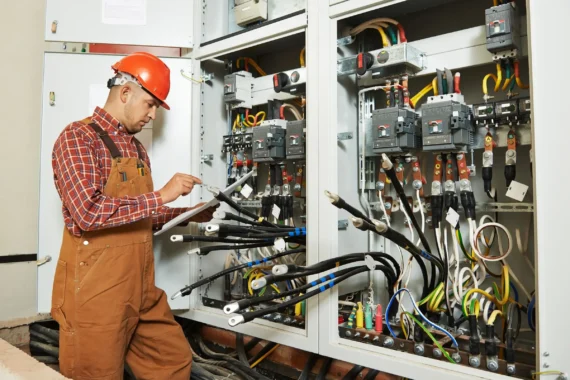Dubai’s skyline pulses with relentless ambition, where every new tower, resort, or smart city district demands flawless electrical infrastructure. Here, construction electrical work transcends mere wiring—it’s the circulatory system of innovation, powering everything from AI-driven offices to luxury residences. Yet, without meticulous project management, even the most advanced electrical designs can falter under deadline pressures, regulatory complexity, or coordination chaos. This guide explores how integrating disciplined project management with construction electrical work transforms Dubai’s blueprints into luminous, resilient realities.
Keytakeaways:
- Strategic Planning: Deep front-end engineering (load calcs, BIM clash detection) aligned with climate, regulations, and building lifecycle is non-negotiable.
- Procurement Mastery: Sourcing DEWA-compliant, high-quality materials (corrosion-proof, fire-resistant) with robust logistics and contingency planning.
- Precision Installation: Enforcing strict protocols, safety (UAE codes), digital documentation, and seamless multi-national team coordination in harsh conditions.
- Smart Tech Integration: Proactively embedding IoT, KNX, AI energy systems, and future-proofing (e.g., EV charging conduits) from the start.
- Rigorous Commissioning & QA: Extensive testing (fail-overs, harmonics, thermal imaging) witnessed by DEWA and third parties to ensure flawless operation.
- Risk & Financial Control: Agile risk mitigation (supply chain, design changes), real-time KPI tracking, value engineering, and strict change order management.
- Sustainability Focus: Mandating green materials, solar-readiness, and energy-efficient systems to meet Dubai’s eco-vision and leverage incentives.
Understanding Dubai’s unique ecosystem is crucial. The city merges blistering growth with uncompromising standards—think DEWA regulations, sustainability mandates (Al Sa’fat), and futuristic visions like District 2020. Consequently, project managers must navigate not just technical specs, but cultural, environmental, and logistical currents. Whether you’re a developer, contractor, or investor, mastering this synergy between electrical execution and project leadership is your conduit to success.
The Blueprint of Power: Strategic Planning for Electrical Systems
Every monumental structure begins with a plan, and in electrical construction, this phase is non-negotiable.construction electrical work hinges on exhaustive front-end engineering: load calculations, single-line diagrams, and technology roadmaps aligned with the building’s lifecycle. Project managers collaborate with engineers to dissect client needs—whether a hospital’s critical backup systems or a hotel’s immersive lighting scenes—translating visions into actionable schematics.
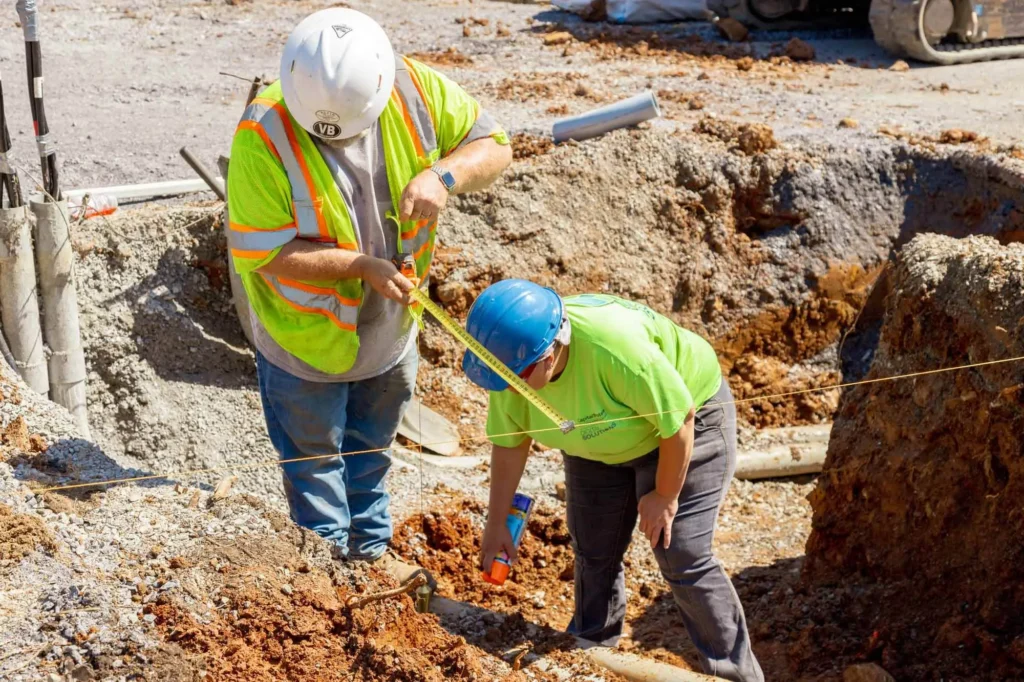
Moreover, Dubai’s extreme climate injects unique variables. Plans must pre-empt thermal stress on conduits, sand ingress risks, and energy efficiency targets. Transitioning smoothly from design to execution requires rigorous clash detection via BIM (Building Information Modeling), ensuring electrical pathways avoid structural conflicts. Ultimately, this phase isn’t just about cables; it’s about foresight. Skipping thorough planning risks costly reworks during bustling construction electrical work, where cranes and crews operate in symphony.
Conducting Currents: Procurement & Material Mastery
Selecting components for Dubai’s construction electrical work demands forensic precision. Project managers spearhead procurement strategies, balancing cost, compliance, and longevity. DEWA-approved switchgear, fire-resistant cabling (BS 7846 standards), and corrosion-proof enclosures become non-negotiables in coastal or desert environments. Sourcing locally—from Jebel Ali Free Zone suppliers—can accelerate timelines but requires vigilant quality audits to dodge counterfeit gear.
Furthermore, logistics orchestration separates smooth projects from stalled sites. Imagine synchronizing deliveries of Saudi-made transformers with European LV panels amid Port Rashid delays. Proactive managers leverage tech like IoT trackers and blockchain manifests for real-time visibility. They also buffer inventories for sudden scope shifts—common when clients request mid-build tech upgrades. Procuring wisely isn’t just acquisition; it’s building resilience into the very veins of the project.
Wired for Excellence: Installation Protocols & Precision
Execution is where theory meets torque wrenches. construction electrical work in Dubai thrives on militaristic precision: teams install busways in 50°C heat, threading conduits through steel forests before cladding seals access. Project managers enforce method statements mandating torque settings, bending radii, and segregation of HV/LV systems to prevent electromagnetic interference. Every termination is photographed, geotagged, and logged—a digital twin taking shape.
Additionally, workforce synchronization is paramount. With projects employing Filipinos electricians, Emirati engineers, and British consultants, clear communication bridges dissolve ambiguity. Daily toolbox talks reinforce safety, while laser-guided tools ensure millimeter accuracy in cable tray alignment. Remember, Dubai penalizes deviations harshly; a misplaced conduit in a MBR District tower might delay 20 trades. Hence, installation isn’t just labor—it’s ballet in boots.
Guardians of the Grid: Safety & Regulatory Compliance
Safety in Dubai’s construction electrical work is a covenant, not a checkbox. Projects adhere to a trifecta: UAE Fire & Life Safety Code, DEWA’s Green Building regulations, and international IEC standards. Project managers implement layered defenses—from arc-flash risk assessments to mandatory harnesses for ceiling grid work—while ensuring every sub-contractor’s ESMA certification is current. Non-compliance risks more than fines; it endangers reputations in a tight-knit market.
Moreover, cultural vigilance matters. Ramadan shifts or heat advisories demand adaptive scheduling—like night shifts for outdoor substation work. Safety officers conduct surprise audits, checking PPE usage and isolation procedures. After all, Dubai’s regulatory bodies (like Trakhees) halt projects for lapses. Integrating safety into project DNA avoids human cost and keeps construction electrical work flowing without judicial friction.
The Digital Nervous System: Smart Tech Integration
Modern Dubai construction electrical work breathes intelligence. Project managers now orchestrate IoT sensor deployments, KNX controls, and district cooling integrations alongside traditional wiring. Consider The Sustainable City’s solar-microgrids: managers coordinate between SCADA programmers, PV installers, and DEWA inspectors to ensure bidirectional energy flows sync flawlessly at handover.
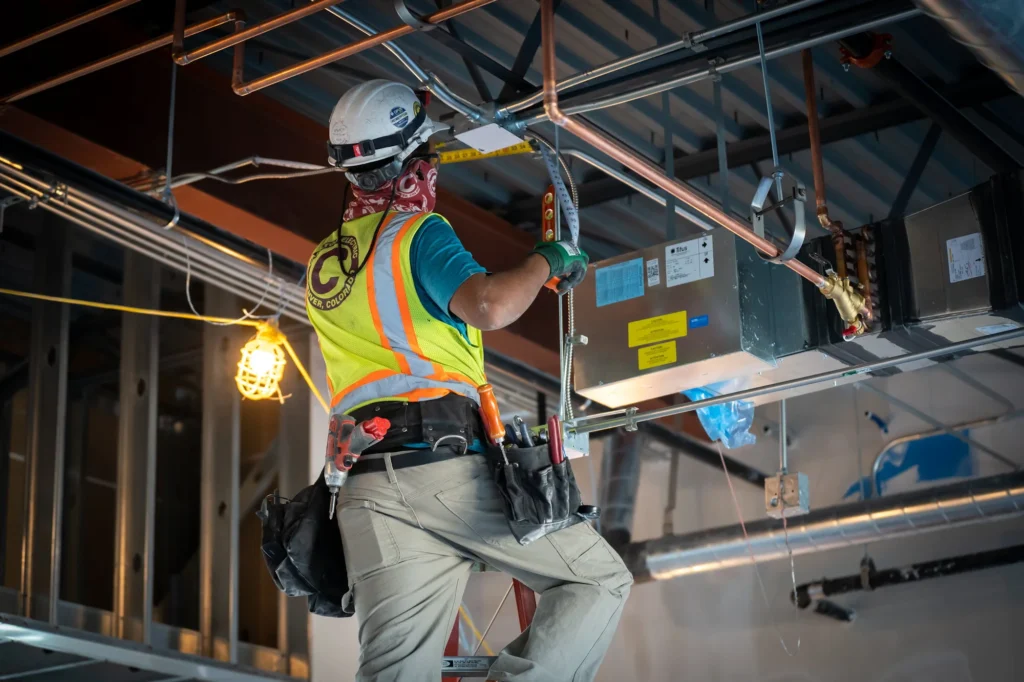
Transitioning further, AI-driven energy platforms like Siemens Desigo demand early embedded programming. Delaying tech scoping risks rewiring entire floors—a budget assassin. Forward-thinking managers also future-proof systems; conduit empty-cells for 6G fiber or EV charging expansions become standard specs. Thus, smart integration isn’t an “add-on”; it’s the cortex of contemporary construction electrical work, demanding project leadership fluent in both electrons and algorithms.
Testing the Pulse: Commissioning & Quality Assurance
A system alive with current isn’t necessarily safe or efficient. Commissioning—the climax of construction electrical work—involves forensic validation. Project managers oversee sequence tests: simulating generator fail-overs, measuring earth resistance in desert soil, or harmonic distortion checks in data centers. DEWA witnesses these trials, signing off only when meters and models align perfectly.
Additionally, quality assurance weaves through every phase. Third parties like Bureau Veritas scrutinize termination crimps and insulation resistance logs. Thermal imaging drones scan panels pre-handover, spotting hotspots before they ignite. In Dubai’s high-stakes environment, “good enough” is obsolete; project managers enforce Six Sigma-level defect tracking. Remember, Burj Khalifa’s lighting systems underwent 5,000+ tests—excellence is habitual, not accidental.
The Maestro’s Baton: Project Management’s Pivotal Role
Project management is the silent current energizing construction electrical work Managers wield Gantt charts like conductors’ scores, synchronizing electricians with concrete pours and glazing crews. They mitigate risks—from supply chain ruptures (like post-Red Sea delays) to design ambiguities—using agile sprints or FIDIC contract leverage. Real-time dashboards track KPIs: cable meters laid vs. forecast, safety incidents, or DEWA inspection pass rates.
Furthermore, financial stewardship defines success. Value engineering might replace premium German busbars with Korean equivalents—saving 15% without compromising lifespan—while change orders are meticulously documented. In Dubai’s hyper-competitive arena, managers who deliver Marina towers on-budget and incident-free become industry legends. Their role? Aligning volts, vision, and value into one coherent surge forward.
Sustainable Sparks: Green Electrification & Future Trends
Dubai’s Net Zero 2050 pledge electrifies construction electrical work with eco-imperatives. Project managers now mandate Cradle-to-Cradle certified materials, solar-ready distribution boards, and regenerative drive systems in elevators. Sites like Expo City Dubai showcase circularity—recycling demolition waste into conduit sleeves—while managers chase LEED points via daylight-harvesting sensors.
Looking ahead, innovation accelerates. Hydrogen fuel cell backups and graphene superconductors loom on blueprints. Project leaders must upskill teams in these technologies while navigating evolving codes. Sustainability isn’t altruism; it’s economics. DEWA’s Shams Dubai incentives slash tariffs for solar-enabled builds, proving that green construction electrical work marries planet care with profit.

